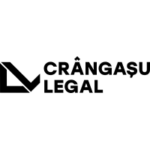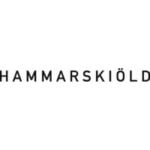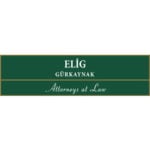-
Overview
(1) Legislation Regime
China’s merger control regime centers on the Anti-Monopoly Law (“AML”) enacted in 2008, which established a comprehensive framework for regulating concentrations of undertakings and aligned China with global antitrust standards. Major amendments in 2022 refined both substantive tests and procedural rules, reflecting lessons from over a decade of enforcement. In addition to the AML, major regulations like Provisions on the Review of Concentrations of Undertakings (2023) (“Review Provision”) and Provisions on Notification Thresholds for Concentrations of Undertakings (2024) (“2024 Threshold”) set out the procedural framework and jurisdictional thresholds for merger notification and review. Furthermore, SAMR issued several detailed guidelines on the simplified procedure for certain cases, application criteria for the simplified procedure, filing documents and materials, horizontal and non-horizontal mergers, providing additional clarity on the application of the merger control regime.
(2) Enforcement Authority
The State Administration for Market Regulation (“SAMR”) is the primary enforcement authority for merger control in China. SAMR’s Anti-Monopoly Bureau handles merger reviews and investigations. For transactions involving strategic sectors like energy and tech, SAMR collaborates with other regulatory bodies, including the National Development and Reform Commission and sector-specific ministries. Besides, the State Council sets overarching competition policy direction.
In 2022, SAMR launched a pilot program allowing regional market regulation authorities to handle certain merger cases. Under this program, the review of simplified procedure cases may be delegated to the market regulation authorities of five provinces and municipalities: Beijing, Shanghai, Guangdong, Chongqing, and Shaanxi. This initiative was aimed at improving the efficiency of the review process. In 2024, the pilot program was formalized into an authorized review system.
(3) Compulsory Ex Ante Review
Any transaction that involves the merger of undertakings, the acquisition of control through shares, assets, or agreements, or the establishment of a joint venture would be subjected to an ex ante review of its competitive effects by the competent authority. In practice, SAMR evaluates competitive effects of a transaction taking into consideration not only the market share and concentration levels of the undertakings, but also public interest and countervailing factors. The filing process can be relatively document-intensive, requiring the submission of transaction agreements, business and market analyses, financial data, and other supporting materials. For complex transactions, the scope of required information can be significantly broader.
-
Is notification compulsory or voluntary?
Notification is compulsory for concentrations that meet the statutory turnover thresholds set out in the AML and relevant regulations. Parties to a notifiable concentration must file a pre-merger notification with SAMR.
For concentrations that do not meet the statutory turnover thresholds, SAMR retains the power to investigate transactions that may have anti-competitive effects.
-
Is there a prohibition on completion or closing prior to clearance by the relevant authority? Are there possibilities for derogation or carve out?
Yes, under Chinese merger control regulations, completion or closing of a notifiable concentration is strictly prohibited prior to clearance by SAMR. This prohibition applies to all actions constituting the implementation of the transaction, including the transfer of shares, assets, or acquisition of control or decisive influence.
- Scope of the Prohibition: The standstill obligation applies broadly. It covers all forms of implementation, including share transfers, asset acquisitions, and changes in governance rights that may confer control. There are no express exemptions for public bids, and such transactions must also be notified and cleared before implementation in China, even if they are subject to mandatory tender offer timelines in other jurisdictions.
- Carve-out Possibilities: China does not officially recognize or provide for carve-out arrangements that would allow parties to exclude the Chinese aspects of a global transaction and close the remainder elsewhere. In principle, implementing the transaction outside of China while delaying or isolating the Chinese components (e.g., by transferring them later or placing them in a trust) still risks being treated as a violation if the transaction as a whole confers control or influence on a global basis. SAMR has not issued formal guidance recognizing such structures, and in practice, such arrangements are treated with caution.
- Availability of Derogations: There is no formal derogation mechanism under Chinese merger control law that would allow parties to apply for early closing or partial implementation prior to clearance. China has no procedure for obtaining a waiver from the standstill obligation, regardless of urgency or transaction structure.
Accordingly, parties must wait for SAMR’s clearance before implementing any aspect of the concentration, even those that have limited or indirect connection to the Chinese market. The lack of a derogation or carve-out option makes China’s standstill regime one of the stricter systems globally.
-
What types of transaction are notifiable or reviewable and what is the test for control?
The following types of transactions are notifiable if they meet the turnover thresholds:
- Mergers between undertakings;
- Acquisitions of control over another undertaking through acquisition of equity or assets;
- Acquisitions of control or the ability to exercise decisive influence over another undertaking through agreements or other means;
- Establishment of joint ventures.
Rather than relying solely on shareholding thresholds to determine control, a substance-over-form approach is applied to assess whether a party gains the ability to exercise decisive influence over the target’s business operations or strategic decisions. Control can therefore be identified based on the following factors:
- The purpose of the transaction and future plans;
- The shareholding structure of the other undertaking before and after the transaction and the changes therein;
- The voting matters and voting mechanism of the shareholders’ (general) meeting and other authorities of the other undertaking, as well as its historical attendance and voting records;
- The composition and voting mechanism of the board of directors and other decision-making or management bodies of the other undertaking, as well as its historical attendance and voting records;
- The appointment and dismissal of senior management personnel of the other undertaking;
- The relationship between the shareholders and directors of the other undertaking, including whether voting rights are exercised by proxy or any person acting in concert;
- Whether there are any significant business relationships or cooperation agreements between the undertakings; and
- Any other factors that shall be considered.
-
In which circumstances is an acquisition of a minority interest notifiable or reviewable?
An acquisition of a minority interest may be notifiable if it confers control or decisive influence over the target. Currently, there is no safe harbor threshold below which notification is automatically ruled out, and companies should pay attention to substantive effects rather than formal shareholding levels.
For instance, some acquisitions of less than 15% of voting rights have been found notifiable where the acquirer obtained significant governance rights or veto rights, thereby gaining decisive influence over key strategic decisions of the target. Control can therefore be identified through:
- Holding a majority of voting rights;
- Having the right to appoint or dismiss the majority of key management;
- Obtaining veto rights over critical decisions like budget, business plan, investment plan and the appointment of senior management personnel;
- Contractual arrangements such as shareholders’ agreements or cooperation agreements that confer decisive influence on one party over the other.
-
What are the jurisdictional thresholds (turnover, assets, market share and/or local presence)? Are there different thresholds that apply to particular sectors?
Jurisdictional thresholds in China for merger control are based exclusively on turnover provided for in the Provisions on Notification Thresholds for Concentration of Undertakings (2024). According to the current turnover thresholds, a transaction must be notified to SAMR if both of the following criteria are met in the most recent fiscal year:
- The total global turnover of all parties to the concentration in the previous fiscal year exceeds CNY 12 billion, and at least two of the parties each had turnover within China exceeding CNY 800 million in the same year;
- The total turnover within Mainland China of all parties to the concentration in the previous fiscal year exceeds CNY 4 billion, and at least two of the parties each had turnover within China exceeding CNY 800 million in the same year.
For certain sectors such as finance and the platform economy, the calculation of turnover shall follow specific guidelines.
-
How are turnover, assets and/or market shares valued or determined for the purposes of jurisdictional thresholds?
Reference period: Turnover is measured over the most recent fiscal year prior to the transaction, which is generally the accounting period used by the parties according to applicable accounting standards.
Group-wide basis: It should be noted that turnover refers to the total turnover of the corporate group to which the undertaking belongs. Specifically, the turnover of a single party to the concentration shall include the aggregate turnover of the following entities:
- The party itself;
- Other undertakings directly or indirectly controlled by the party referred to in item (1);
- Other undertakings that directly or indirectly control the party referred to in item (1);
- Other undertakings directly or indirectly controlled by the undertakings referred to in item (3); and
- Other undertakings jointly controlled by two or more of the undertakings referred to in items (1) through (4).
Turnover generated between the undertakings listed in items (1) to (5) shall be excluded from the turnover calculation.
Geographical allocation: Domestic turnover refers to turnover generated from sales to customers located within mainland China. Conversely, sales made from China to customers outside China are excluded from domestic turnover calculations. Specifically, turnover generated in provinces or regions like Hong Kong, Macau, and Taiwan is generally excluded from domestic turnover.
-
Is there a particular exchange rate required to be used for to convert turnover thresholds and asset values?
China has not designated any mandatory exchange rate for converting foreign currency turnover or asset values into CNY. Therefore, when assessing whether the notification thresholds are met, undertakings may use a reasonable exchange rate in accordance with standard accounting practices, e.g. the arithmetic mean of the central parity rate for the corresponding fiscal year announced by the People’s Bank of China.
-
In which circumstances are joint ventures notifiable or reviewable (both new joint ventures and acquisitions of joint control over an existing business)?
Both the establishment of a new joint venture and the acquisition of joint control over an existing business are subject to mandatory notification and review if the transaction meets the turnover thresholds and results in a change in control. There is therefore no separate threshold for joint ventures, and the form of joint venture involved is irrelevant. To assess the turnover thresholds in the case of joint venture, one should consider the aggregate turnover of the ultimate parent groups of the parties involved in the joint venture rather than the joint venture entity itself.
In respect of whether the filing obligation depends on the existence of local nexus in China, it is clear that no explicit local effects test is applied in China’s merger control regime. Therefore, even if the joint venture has no actual or expected business within the Chinese territory, such as green field joint ventures entirely outside of China, as long as the turnover threshold is met, filing obligation is still triggered.
-
Are there any circumstances in which different stages of the same, overall transaction are separately notifiable or reviewable?
In cases where target assets are divided among different parties, or where the transaction consists of a series of related but formally independent steps (including multi-stage transactions), notification is required for the entire transaction if, taken as a whole, it constitutes a single concentration of undertakings and meets the relevant thresholds. The assessment of whether a concentration has occurred focuses on whether the overall transaction results in a change of control or the acquisition of decisive influence over the target. The review conducted by the authority encompasses all components of the transaction, and there is no requirement to submit separate notifications for each stage.
-
How do the thresholds apply to “foreign-to-foreign” mergers and transactions involving a target / joint venture with no nexus to the jurisdiction?
As said in Question 9, China’s merger control regime applies equally to foreign-to-foreign transactions, including those where the target or joint venture has no assets, sales or business presence in China. The notification obligation is determined solely by reference to whether the jurisdictional turnover thresholds are met, regardless of the local nexus or competitive effects within China.
-
For voluntary filing regimes (only), are there any factors not related to competition that might influence the decision as to whether or not notify?
The AML and 2024 Threshold do not prohibit undertakings from voluntarily file for merger notification. If concentrations that do not meet the statutory turnover thresholds may have anti-competitive effect, undertakings concerned can submit the filing voluntary.
-
What is the substantive test applied by the relevant authority to assess whether or not to clear the merger, or to clear it subject to remedies?
As a general rule, when reviewing a concentration of undertakings, the following factors shall be taken into consideration:
- The market shares of the undertakings participating in the concentration in the relevant market and their ability to control the market;
- The degree of market concentration in the relevant market;
- The impact of the concentration on market entry and technological progress;
- The impact of the concentration on consumers and other relevant undertakings;
- The impact of the concentration on the development of the national economy;
- Other factors deemed necessary by the competent authority under the State Council to consider for evaluation of the impact on competition.
China’s substantive test aligns broadly with international practice. In conducting the analysis, SAMR considers both unilateral and coordinated effects, assesses horizontal, vertical, and conglomerate relationships, and takes into account buyer power, barriers to entry, and innovation impact. More specifically:
- In horizontal relationships, high market shares (especially >50%) and high HHI levels (a measure of market concentration level) may trigger a presumption of anti-competitive effects;
- In vertical relationships, SAMR assesses possibilities of input or customer foreclosure, access to sensitive information, and self-preferencing, particularly in platform markets;
- In conglomerate relationships, potentials are reviewed for leveraging market power through practices such as tying, bundling or reducing interoperability; and
- Offsetting factors, such as timely and effective market entry or significant buyer power, may be taken into account to mitigate competitive concerns.
Besides, there have not been any distinct substantive tests for specific sectors, although sectors such as telecoms, finance and energy may require parallel review under sector-specific regimes, which are not covered by the merger control framework.
Up to now, SAMR has published the Guidelines on the Review of Horizontal Mergers in 2024, and is recently soliciting public comments on the draft Guidelines on the Review of Non-horizontal Mergers, to further standardize the substantive test and enhance its transparency.
-
Are factors unrelated to competition relevant?
In general, SAMR focuses on competition issues, i.e. efficiency considerations, in merger control review. Occasionally, however, certain broader “public interest” factors may be considered in addition to competition-related factors, even if they are not directly tied to traditional antitrust analysis. For instance, in transactions involving strategic sectors such as energy, critical infrastructure, or core technologies, the authority may assess the transaction’s impact on national industrial security, economic development plans, and public services.
That said, these non-competition factors are typically handled under separate foreign investment or national security review mechanisms, and are not frequently cited independently as grounds for antitrust intervention.
-
Are ancillary restraints covered by the authority’s clearance decision?
Ancillary restraints, such as non-compete obligations imposed on the seller, are not expressly covered in the merger clearance decision by the SAMR. Rather, the parties to the deal are expected to be responsible for conducting a self-assessment of the legality of any ancillary restraints capable of falling under prohibited anti-competitive agreement, even though current Chinese antitrust laws and regulations do not explicitly define to what extent the obligation could be considered ancillary and thus justified.
That being said, practices from foreign jurisdictions and competition law theories may provide useful reference in assessing the legitimacy of such clauses. A restraint may be considered ancillary and therefore allowed if it meets the following three conditions:
- It is directly related and subordinate to a legitimate main transaction or business arrangement;
- It is objectively necessary to the implementation of the main transaction; and
- It is proportionate in scope, duration, subject matter, and geographic coverage.
Based on these criteria, parties should make sure that the restraint is essential to achieving the legitimate objectives of the transaction, that no restraint is irrelevant in terms of the scope of activity, time and space, and that the restraint is the least restrictive way to achieve the objectives. Typically, non-compete obligations beyond 3 years are viewed with caution.
-
For mandatory filing regimes, is there a statutory deadline for notification of the transaction?
Under AML and implementing regulations, there is no specific statutory deadline by which a mandatory merger filing must be submitted. The standstill obligation only requires that filing must be made and clearance obtained from SAMR before the transaction is closed. However, parties should allow sufficient time before closing for the review period.
-
What is the earliest time or stage in the transaction at which a notification can be made?
Generally, the notification can only be filed after the execution of the transaction documents. Pre-signing filing is possible only when the parties can sufficiently establish the intention and framework information of the transaction to be submitted. The elements that the notifying parties need to be certain about, if they would like to proceed with the notification at an early stage, include a reasonably detailed transaction structure, an explanation of the control change and expected market impact, and the turnover of the parties involved. In cases where the elements are uncertain or subject to material change, SAMR may delay acceptance until sufficient documentation is available, so that an early engagement with SAMR through consultations would be useful, especially for complex or novel transactions.
-
Is it usual practice to engage in pre-notification discussions with the authority? If so, how long do these typically take?
Pre-notification discussions with the SAMR are common and strongly encouraged, especially for transactions involving complexity, market overlaps, or uncertainty around control. These discussions are voluntary yet help to clarify whether the transaction meets the standards for simplified case filing, identify document deficiencies before formal submission, and avoid delays during the review process.
-
What is the basic timetable for the authority’s review?
Pursuant to the Provisions on the Review of Concentrations of Undertakings, there are 3 phases for the SAMR’s review after formal acceptance:
- Preliminary Review: 30 working days from the formal acceptance of the complete filing, during which most simplified cases are cleared.
- Further Review: Up to 90 additional working days if SAMR does not approve the transaction within the first phase.
- Special Review (in exceptional cases): Up to another 60 working days.
Prior to formal acceptance, a completeness review of the submitted materials typically takes 3-6 weeks, and this phase is not subject to the statutory review period.
-
Under what circumstances may the basic timetable be extended, reset or frozen?
According to the AML and Review Provision, SAMR may “stop the clock”, which means suspending the review period, under the following circumstances:
- Substantive changes or external factors: If such situations as significant changes in the transaction structure, information concealment, or severe market changes arise, SAMR may suspend the review period by written notice. The timeline resumes when the issue is resolved, and SAMR notifies the notifying party in writing;
- Incomplete filings: If the notifying party fails to submit required documents or materials, which prevents review from proceeding, SAMR will issue a written notice requiring rectification within a specified time. If the party fails to comply, SAMR may suspend the timeline;
- Remedy negotiations: If the parties submit a remedy proposal, and request suspension of the timeline to allow more time for remedy negotiations or internal coordination, SAMR may agree and suspend the clock if deemed necessary. Once the remedy assessment is complete, the review period resumes.
-
Are there any circumstances in which the review timetable can be shortened?
The review timetable can be effectively shortened in certain cases through the simplified procedure, also known as the “fast-track” review mechanism. On the other hand, there is no statutory mechanism for shortening the review periods for normal cases, and SAMR does not accept requests to accelerate the procedure.
Transactions to be reviewed under a simplified procedure usually obtain clearance within 3-4 weeks from formal acceptance, significantly shorter than the full 30-day phase I review period. Eligible transactions for simplified procedure include:
- Horizontal transactions in which the combined market share of the parties in the same relevant market is less than 15%;
- Vertical transactions in which each party’s market share in the upstream and downstream markets is less than 25%;
- Transactions in which the parties are neither in the same market nor have vertical links, and their market shares in each relevant market are below 25%;
- Establishment of offshore joint venture which does not conduct any economic activities in China;
- Acquisitions of an offshore target that does not engage in any economic activity in China; and
- Internal restructuring of jointly controlled entities.
These conditions (a) to (c) must be cumulatively met, and (d) to (f) can be alternatively met. Yet even the above criteria are met, the notification may still not qualify for the simplified procedure due to difficulties in defining the relevant market or because the concentration may have adverse effects on market entry, technological development, consumers, or the development of the national economy.
-
Which party is responsible for submitting the filing?
According to the AML and Review Provision, all parties acquiring control bear the obligation to ensure that the transaction is notified to the SAMR whenever it meets the jurisdictional thresholds, although in practice, the filing can be submitted by one party (often the acquirer), with the cooperation and authorization of the other party or parties acquiring control.
-
What information is required in the filing form?
Typically, the scope of the required information includes the following:
- Undertakings concerned information: names, addresses, business scopes, registration materials, audited financial statements. For overseas undertakings, authentication documents such as consular legalization or Hague Apostille must also be submitted.
- Transaction related information: executed transaction agreement, introduction of the transaction, background, motive and economic rationality of this transaction.
- Competitive analysis: definition of the relevant market, market shares of undertakings participating in the concentration and main competitors in each relevant market, competition analysis on the transaction’s impact on each relevant market, supply and demand structure, main customers and suppliers, market entry barriers and potential entrants, efficiency generated by the concentration, etc.
For the simplified procedure, whilst the elements remain the same, requires less detailed competitive analysis.
-
Which supporting documents, if any, must be filed with the authority?
The typical documentation necessary includes power of attorney, certificate of incorporation or business licence, financial statements, executed transaction documents (such as the merger agreement, share purchase agreement, or joint venture contract), group shareholder structure charts clearly identifying controlling entities and subsidiaries, and a declaration of authenticity signed by each notifying party. Translation into Chinese as a summary of all materials in foreign languages must also be provided.
-
Is there a filing fee?
No. The review of concentrations is considered as a purely administrative service in China. So no fees are charged for the filing.
-
Is there a public announcement that a notification has been filed?
A public announcement is made only for cases filed under the simplified procedure. In such cases, SAMR publishes a “Public Notice Form for Simplified Cases” on its official website, which includes:
- Basic information on the transaction;
- A statement explaining the reasons for applying the simplified procedure.
For cases handled under the normal procedure, the description that a notification has been filed is not publicly disclosed, only the clearance decision is publicly disclosed.
-
Does the authority seek or invite the views of third parties?
Yes. Although third parties do not have a statutory right to access the case files, they do have the opportunity to express concerns that may influence SAMR’s substantive assessment, particularly in sensitive or high-profile transactions. SAMR may also actively reach out to relevant stakeholders, including competitors, customers, suppliers, industry associations, and other government agencies, to solicit their views, which is more common during the further review phase or when the remedies are being considered.
In addition, for cases filed under the simplified procedure, SAMR will publish the submitted Public Notice Form on its website for a 10-day comment period, inviting any third party to submit written comments regarding whether the transaction raises competition concerns that would disqualify the case from simplified review. If the objections succeed, SAMR may reassess the case and require the notifying parties to refile under the normal procedure.
-
What information may be published by the authority or made available to third parties?
Apart from the “Public Notice Form for Simplified Cases” under simplified procedure, for cases handled under the normal procedure, notifying parties are requested to provide both confidential and public versions of the notification form submitted to SAMR. The public version often serves as the basis for opinion-soliciting purposes, i.e. SAMR may provide the non-confidential notification or relevant sections of it to government authorities, industry associations, other undertakings and consumers to consult their views.
-
Does the authority cooperate with antitrust authorities in other jurisdictions?
China has signed more than 50 cooperation agreements, memoranda of understanding, and joint statements with antitrust authorities from more than 30 jurisdictions including the United States, European Union, Russia, United Kingdom, Japan, South Korea, Brazil, Canada, and South Africa. These agreements typically provide a framework for information exchange, policy dialogue and technical cooperation, though they do not compel the exchange of confidential information without consent. Parties that refuse to grant a waiver for the sharing of confidential information face no legal consequences under Chinese law, but parties to multi-jurisdictional transactions are often encouraged to do so to facilitate parallel reviews and ensure consistency.
-
What kind of remedies are acceptable to the authority?
SAMR accepts structural, behavioural and hybrid remedies. The selection of remedies depends on the specific facts of the transaction and the potential anticompetitive effects identified during the review.
- Structural Remedies: These involve the divestiture of tangible or intangible assets (such as intellectual property rights, data, or other relevant interests). The divested business must generally include all elements necessary to compete effectively in the relevant market, including physical assets, intellectual property, key personnel, equity interests, and associated customer or supply contracts. The divestiture may involve subsidiaries, business units, or divisions of the notifying parties;
- Behavioural Remedies: These may include but are not limited to granting access to infrastructure or platforms, licensing of key technologies, terminating exclusive or restrictive agreements, maintaining independent operations, modifying platform rules or algorithms, and ensuring interoperability;
- Hybrid Remedies: A combination of structural and behavioural measures may be imposed. For example, structural divestitures may be complemented by obligations to licence technology or maintain open access to essential facilities.
When it comes to divestment remedies:
- Up-front Buyer Requirement: Though SAMR may impose a “fix-it-first” or “up-front buyer” requirement so that the transaction cannot close until a binding agreement for the divestiture has been signed with a third-party purchaser approved by SAMR as suitable, this requirement is not automatic at all. In most cases, the divesting party needs to find a suitable purchaser within the time limit specified in the remedy decision (if not specified, within 6 months).
- Buyer Suitability Criteria: The determination of the buyer is subject to an assessment of suitability by SAMR that considers whether the buyer is independent from the notifying parties, whether it is capable of operating the business to be divested, and whether the acquisition would bring new competition concerns or rather improve market competition.
-
What procedure applies in the event that remedies are required in order to secure clearance?
If a proposed concentration is likely to raise competition concerns, the parties are expected to propose remedies that may include structural, behavioural or hybrid measures as listed by a commitment plan, in order to secure conditional clearance from SAMR.
- Start of Negotiations: Negotiations are triggered voluntarily by the parties and usually take place during the further or special review stage, as remedies cannot formally be submitted during the initial review period. The timing for initiating remedy negotiations is not fixed by statute and should be determined on a case-by-case basis. But if it is foreseeable that the transaction may raise substantive concerns, the parties can begin engaging with SAMR even before formal concerns are raised, so as to allow for more time to deliberate on commitments.
- Process of Negotiations: The negotiations may go through multiple rounds of written and oral consultations with SAMR. Once a preliminary commitment plan is formed, SAMR may conduct a market test and seek opinions from other stakeholders such as competitors, customers and industry experts. The market test is typically done through informal consultations rather than public solicitation. Based on these works, SAMR may require the parties to revise the proposal before accepting it. This process can be time-consuming, especially in cases involving multiple jurisdictions.
- Acceptance of Remedies Approved in Other Jurisdictions: SAMR may consider remedies accepted by foreign competition authorities in global transactions reviewed concurrently in multiple jurisdictions. However, there is no automatic recognition or waiver. SAMR will independently assess whether foreign remedies sufficiently address competition concerns in the Chinese market, and then may require additional or modified commitments tailored to the Chinese context.
-
What are the penalties for failure to notify, late notification and breaches of a prohibition on closing?
Under AML, violations of the notification obligation or the prohibition on closing may result in serious legal sanctions. SAMR is empowered to order the breaching parties to cease implementation of the concentration, dispose of shares or assets, transfer business, or take other measures to restore the market to its state prior to the concentration, and may also impose a fine, either of up to 10% of the sales revenue in the previous year where there has been effects of eliminating or restricting competition, or of up to CNY 5 million where there has not been such adverse effects. However, Chinese law does not provide for criminal penalties like imprisonment for failure to notify, late notification and breaches of the standstill obligation. In practice, penalties have been routinely imposed, especially since SAMR has taken a stricter stance on merger control after the AML revision in 2022.
For failure to notify and late notification, most fines have been imposed on the acquiring party, although in joint ventures or mutual mergers, both parties may be held liable. There is no exception for foreign-to-foreign mergers, considering that SAMR has fined many multinationals for failing to notify acquisitions of offshore targets with limited or no nexus to China.
For breaches of a prohibition on closing, SAMR no longer needs to identify anti-competitive effects so as to impose sanctions, since a mere breach of the standstill obligation is sufficient to trigger legal liability. SAMR may then invalidate the transaction in part or in whole, impose restorative measures, and fine the responsible parties.
-
What are the penalties for incomplete or misleading information in the notification or in response to the authority’s questions?
If a party submits false or misleading information in the notification or in response to the authority’s questions, SAMR may order rectification and impose penalties that may be up to 1% of the party’s turnover in the previous year, or up to CNY 5 million if turnover is unavailable or unquantifiable. What is important is that individuals directly responsible, such as directors, may also face fines of up to CNY 500,000.
-
Can the authority’s decision be appealed to a court?
Yes, decisions issued by the SAMR regarding merger control can be appealed to a court. AML provides that if a party is dissatisfied with a merger review decision, it may first apply for administrative reconsideration, and then those who are still dissatisfied with the reconsideration decision may initiate an administrative lawsuit.
Competent court: Pursuant to the Administrative Litigation Law, lawsuits against an administrative decision made by SAMR shall be under the jurisdiction of the intermediate people’s court located in the place where the administrative organ is located, namely the Beijing No. 1 Intermediate People’s Court. However, in cases involving significant national interests or particularly complex issues, jurisdiction may be elevated to the Beijing High People’s Court. In addition, China adopts a two-instance final adjudication system. If a company is dissatisfied with the judgment of the first-instance court, it may appeal. Pursuant to special provisions of the law for lawsuit against SAMR’s merger control decision, the second-instance appeal shall fall under the jurisdiction of the Intellectual Property Tribunal of the Supreme People’s Court.
Proper plaintiff: In principle, the party concerned by an administrative act, as well as other citizens, legal persons, or organizations with an interest in the act, have the right to file an administrative lawsuit if they believe that the administrative authority or its staff has infringed upon their legitimate rights and interests through its administrative conduct. According to existing case law, on one hand, if SAMR clears a concentration unconditionally , the notifying parties are not deemed to have standing, as such a decision does not adversely affect their rights and interests. On the other hand, if a prohibition decision is issued, or the concentration is approved with restrictive conditions, the notifying parties are directly affected and thus have standing to bring an administrative lawsuit. For third parties, although in theory judicial remedies should be available, Chinese law and judicial practice remain unclear as to whether, and under what circumstances, they have standing to challenge merger control decisions.
Timeline: The appeal must be filed within 6 months from the date the decision was served. The duration of the lawsuit varies: appeals may take several months to over a year, depending on the complexity of the case and the court’s caseload.
-
What are the recent trends in the approach of the relevant authority to enforcement, procedure and substantive assessment?
Under China’s current anti-monopoly enforcement regime, SAMR has demonstrated several notable trends in enforcement approaches, procedural reviews, and substantive assessments:
Enforcement Trends
The AML clarifies the regulatory objectives for monopolistic conduct, prompting authorities to intensify enforcement across all types of anti-competitive practices, particularly in merger control. In recent years, penalties for failure to notify transactions and illegal implementation of concentrations have become increasingly stringent.
Additionally, enforcement priorities are shifting toward emerging industries and key sectors, such as internet platforms and high-tech industries, where monopolistic practices (e.g., innovation suppression and market foreclosure) are more prevalent. Strengthened oversight ensures a level playing field and promotes the healthy development of these industries.
Procedural Trends
To enhance review efficiency and quality, SAMR continues to refine its procedures under frameworks like the Review Provisions. Key developments include:
- Simplified procedure cases: Shortened review timelines for transactions meeting specific criteria.
- Digital transformation: Leveraging online system to streamline notification, acceptance, and review processes, enabling end-to-end digital case handling and improving transparency for businesses.
Substantive Assessment Trends
Beyond traditional metrics (e.g., market share, HHI), SAMR increasingly emphasizes:
- Innovation impact: Assessing whether a concentration could stifle market dynamism or technological progress, particularly in R&D-driven sectors.
- Consumer welfare: Evaluating effects on pricing, product quality, and choice availability.
- Public interest expansion: Broadening scrutiny of concentrations involving critical infrastructure (e.g., energy, transport, telecom) and national security, with considerations for industrial policy and economic security.
-
Are there any future developments or planned reforms of the merger control regime in your jurisdiction?
Based on current policy directions and evolving industry needs, several trends and potential areas of reform can be anticipated.
First, there is a strong likelihood of procedural optimization and increased efficiency in merger review. While the existing Provisions on the Review of Concentrations of Undertakings already regulate procedural aspects, the growing complexity and volume of transactions necessitate further streamlining. In particular, the simplified procedure may be refined and expanded to cover more transactions that pose limited competition concerns. This would allow for faster clearances and reduced compliance costs for businesses. Moreover, the adoption of advanced technologies such as big data analytics and artificial intelligence could facilitate smarter, more automated review processes. For example, the use of intelligent algorithms to analyze market data may improve the accuracy and speed of competitive assessments.
Second, enhanced regulation of the innovation economy is expected to become a major focus. With the rapid development of innovation markets, data and algorithms have emerged as critical competitive factors. Future reforms may introduce more targeted merger review rules specific to the digital sector. The amended AML emphasizes the objective of “maintaining market competition and promoting innovation,” providing a foundation for regulating concentrations in data-driven markets. Going forward, more detailed rules may be issued concerning market definition, market share calculations, and the assessment of competition risks involving data monopolization or algorithmic collusion. For instance, mergers involving the integration of large-scale user data could trigger a review of their potential impact on competition and consumer privacy. In cases where algorithms are used to facilitate coordinated behavior, additional scrutiny may be applied to prevent anti-competitive effects that stifle innovation or harm consumer welfare.
Third, China is likely to strengthen international cooperation in cross-border merger review. With global M&A activity becoming increasingly common, China may seek to improve coordination with foreign antitrust authorities. In line with international practice and the principle of reciprocity, China is expected to sign more bilateral or multilateral cooperation agreements to facilitate information sharing and joint investigations. This would help reduce regulatory burdens for companies subject to multi-jurisdictional review and ensure effective oversight of global transactions that may affect competition in China. Enhanced cooperation would also support fair competition for Chinese companies in international markets.
Finally, balancing competition policy with industrial policy is anticipated to become an important consideration. The AML expressly allows undertakings to expand their scale and enhance competitiveness through lawful concentrations. This reflects an acceptance of mergers that contribute to industrial upgrading. Accordingly, future reforms may support concentrations aligned with national strategic objectives, such as those promoting technological advancement or industrial modernization. At the same time, regulators will remain vigilant to prevent anti-competitive conduct disguised as industrial development, ensuring the continued functioning of market-based competition mechanisms.
In summary, while a comprehensive overhaul of the merger control regime has not yet been finalized, China is expected to make targeted improvements in response to the challenges posed by the digital economy, cross-border transactions, procedural demands, and the interplay between competition and industrial policy. These developments aim to enhance the effectiveness, transparency, and predictability of merger control in China.
China: Merger Control
This country-specific Q&A provides an overview of Merger Control laws and regulations applicable in China.
-
Overview
-
Is notification compulsory or voluntary?
-
Is there a prohibition on completion or closing prior to clearance by the relevant authority? Are there possibilities for derogation or carve out?
-
What types of transaction are notifiable or reviewable and what is the test for control?
-
In which circumstances is an acquisition of a minority interest notifiable or reviewable?
-
What are the jurisdictional thresholds (turnover, assets, market share and/or local presence)? Are there different thresholds that apply to particular sectors?
-
How are turnover, assets and/or market shares valued or determined for the purposes of jurisdictional thresholds?
-
Is there a particular exchange rate required to be used for to convert turnover thresholds and asset values?
-
In which circumstances are joint ventures notifiable or reviewable (both new joint ventures and acquisitions of joint control over an existing business)?
-
Are there any circumstances in which different stages of the same, overall transaction are separately notifiable or reviewable?
-
How do the thresholds apply to “foreign-to-foreign” mergers and transactions involving a target / joint venture with no nexus to the jurisdiction?
-
For voluntary filing regimes (only), are there any factors not related to competition that might influence the decision as to whether or not notify?
-
What is the substantive test applied by the relevant authority to assess whether or not to clear the merger, or to clear it subject to remedies?
-
Are factors unrelated to competition relevant?
-
Are ancillary restraints covered by the authority’s clearance decision?
-
For mandatory filing regimes, is there a statutory deadline for notification of the transaction?
-
What is the earliest time or stage in the transaction at which a notification can be made?
-
Is it usual practice to engage in pre-notification discussions with the authority? If so, how long do these typically take?
-
What is the basic timetable for the authority’s review?
-
Under what circumstances may the basic timetable be extended, reset or frozen?
-
Are there any circumstances in which the review timetable can be shortened?
-
Which party is responsible for submitting the filing?
-
What information is required in the filing form?
-
Which supporting documents, if any, must be filed with the authority?
-
Is there a filing fee?
-
Is there a public announcement that a notification has been filed?
-
Does the authority seek or invite the views of third parties?
-
What information may be published by the authority or made available to third parties?
-
Does the authority cooperate with antitrust authorities in other jurisdictions?
-
What kind of remedies are acceptable to the authority?
-
What procedure applies in the event that remedies are required in order to secure clearance?
-
What are the penalties for failure to notify, late notification and breaches of a prohibition on closing?
-
What are the penalties for incomplete or misleading information in the notification or in response to the authority’s questions?
-
Can the authority’s decision be appealed to a court?
-
What are the recent trends in the approach of the relevant authority to enforcement, procedure and substantive assessment?
-
Are there any future developments or planned reforms of the merger control regime in your jurisdiction?





















